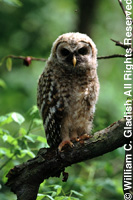
| Atlas Shows Climate Change Effects Birds | 11 March 08 |
 The new Climatic Atlas of European Breeding Birds suggest urgent action is needed to avoid devastating climate change impacts on bird species. The new Climatic Atlas of European Breeding Birds suggest urgent action is needed to avoid devastating climate change impacts on bird species. Climate change and rainfall patterns can greatly alter migration, breeding, behavior, and even genetic composition of birds. Atlas projections were based on the effects of a likely 3 degree Celsius increase above pre-industrial levels in average global temperature. The atlas shows potential distribution for bird species in Europe would shift nearly 550km northeast and be reduced by a fifth of its current size. Models indicate 75% of Europe's nesting birds will face declined ranges. Worldwide birds species are experiencing changes, particularly in Arctic regions where sea ice and tundra is shrinking rapidly. Up to 15% of the world's birds breed in the Arctic. Reducing greenhouse gas emissions now will slow climatic effects and help wildlife adapt. Nature conservation is also needed to protect current and potential bird habitats. Visit Climatic Atlas of European Breeding Birds published Lynx Editions View Atlas Summary - Birds on the Move: Introducing a Climatic Atlas of European Breeding Birds (PDF) Visit European Bird Census Council View January 15, 2008 BBC News article View January 15, 2008 Bird Life article View Nature Canada - Climate Change and Birds pages Sources: BBC News, Bird Life, European Bird Census Council, Nature Canada |
|
 Print version Print version |
Top |
